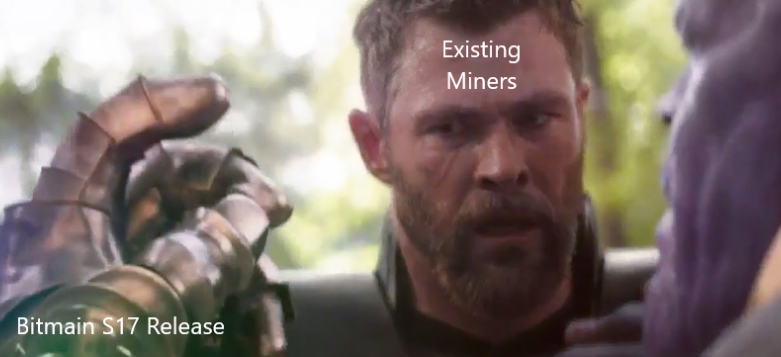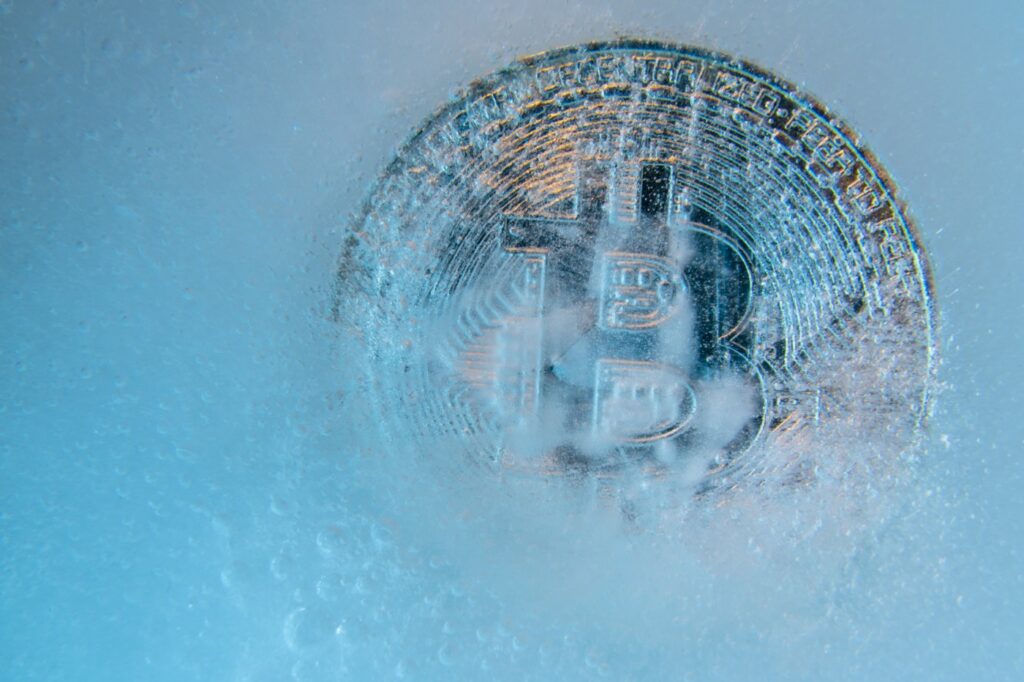By Phillip Ng, VP of Corporate Development
It’s all about balance.
In the crypto world — and for bitcoin in particular — there is constant news on the number of miners coming online or going offline. Macro factors such as the price of bitcoin, along with the price and availability of mining equipment, have an impact on these developments, which in turn affect the amount of computing power that’s dedicated to securing the bitcoin blockchain.
All this flux in supply and demand made me wonder, “Is there an ideal number of miners?” Soluna is striving to power bitcoin’s power-hungry Proof of Work (PoW) consensus mechanism with renewable energy, so we couldn’t help but wonder about an even more perfect world, with an optimum match between the needs of Bitcoin and the mining nodes that power crypto. What might that look like?
Mining and Value
Let’s first zoom out with the question, “What is mining?”
Mining is the process by which the cryptocurrency network is secured, and in turn adds new currency to the blockchain. The network consumes computing power from miners to process transactions and secures the history of the blockchain. In exchange for performing this service, miners share a fixed, programmatic reward.
The ideal number of miners serving a network is directly proportional to the value of the network. Think of miners as the security forces of a bank: At a community bank, there are relatively little hard assets secured. Security is minimal, maybe just cameras and an alarm. But if you’re guarding Fort Knox, you would want the military there. Why? Because there is a lot of value stored in that facility.
Similarly, the value of a cryptocurrency network should determine the amount of resources that are devoted to mining. As the value increases, there should be more mining.
Risky Business
So how could we grow into this “perfect” world, where mining activity increases to a point where there’s an extremely well-balanced supply of mining nodes to mining?
Let’s start by acknowledging a problem: mining is a risky business. Many of the large crypto mining companies have had a disastrous run and misspent a great amount of capital. This poor track record is for two principal reasons:
Firstly, the market for mining is so new that the evolution of the market was actually far different than what transpired. Some imagined sophisticated data center operations similar to traditional data centers. Instead, miners raced for scale and tight margins. Since there is no differentiation in terms of product (all miners are there to mine bitcoin), the incentive was to search for margin discipline. Instead of Virgin Galactic, Spirit Airlines is the prevailing model.
The second reason for the risk of mining is that the key capital input — mining chips — is tied to the semiconductor business, which is highly cyclical due to:
- Its tie-in to capital spend that the businesses draw back from in downturns;
- The uneven pace of technology advancement; and
- Low marginal costs of production, which encourages a race to the bottom.
This reality is evidenced by the erratic behavior of some of the industry’s largest players.
The volatility of mining has resulted in a broad distribution of outcomes for miners. However, I don’t expect this to go on forever. Just as actuaries are getting better at pricing risk, the entrepreneurs in this industry are learning to build better economic models for investment and forecasting volatility. In addition, BTC price volatility is slowing down.
Reaping the Benefits
Say we achieve perfect harmony, if only for a moment, and mining node supply matches up optimally with network demand. What actual benefits would be reaped from this miraculous milestone?
First off, the network would be adequately secured, which would therefore increase the value of the network.
Second, we would also experience lower price volatility, because miners are what has been dubbed “half hodlers(1)”. This means they hold most of their coin when price is rising, but tend to sell in pricing pullbacks. For example, if a miner has $1mm in fixed operating costs, you have to sell 100 BTC when it’s at $10,000 to cover their OPEX (OPerational EXpenses), but 333 BTC if BTC falls to $333. Miners with bad operating structures tend to have to sell into bear markets, which can accelerate selling momentum and price panic.
Finally, this perfect balance would result in more efficient capital allocation. There would be better returns for investors, and more capital to deploy in other productive assets.
Nailing the Ratio
Taking this intellectual exercise one step further, how might we go about determining what that ravishing ratio might be, at any given time?
To get there, consider that investors view forecast returns to miners in the context of the return’s volatility — we can call that the “risk-adjusted return”. If risk-adjusted return exceeds the cost of capital for an investor, they will invest. More investment = more miners. Less investment = Less miners. So invest if…
Risk-Adjusted Return > Funding costs (aka “What I can earn elsewhere.”)
For example, when everyone thought BTC was going to the moon in 2017/18, the risk adjustment was very low. People over-invested in the industry and there was a boom-bust cycle. Subsequently, bitcoin recovered and investment crept back in.
With the cost and availability of electricity being an important part in miners’ decision to drop in or out, energy supply is a big factor to consider. Let’s circle back to Soluna, for example, which is poised to make a net positive impact on the energy-intensive PoW mining process: We’re building high-performance off-the-grid data centers that are co-located with, and powered by 100% renewable energy power plants. How might such environmentally beneficial solutions factor into figuring things out?
Soluna brings three solutions to this equation:
- Our world-class power results in best-in-class mining margins;
- Our own power means we are locked in: No one can raise the prices to kick us out; and
- We are diversified via our ability to sell power to the grid, making Soluna far more resilient than a normal miner.
Scale these attributes up, and network security should continue to rise in step, along with decreasing price volatility, and more efficient/expansive capital allocation across the board.
Go For It!
All this said, should blockchain balance actually be the goal? And once we hit that groove, would we be locked in, or simply feel it as a fleeting state of grace?
Some industries are simply highly cyclical. One example of this is the semiconductor industry. Over time, semiconductor investors have learned that business resilience is a key consideration. Resilience is achieved through scale, a strong balance sheet, and a rigorous discipline to efficiency. The consequence is large players, such as Samsung and NVIDIA, are able to drive innovation through the business cycle.
On the other hand, other industries are cyclical due to poor calculations by investors deploying capital. An example of this would be the fracking boom, where speculators rush ahead in search of riches, overextending themselves, and overinvesting. The result: boom and bust.
So, companies and investors build their businesses with a level of resilience commensurate to the underlying fundamentals of the industry they operate in. In the recent past, hashrate and the miner’s volatility was driven by investors’ poor ability to visualize the future.
As investors get smarter, and the industry gains more of a track record, the industry will be more balanced.
Perfectly balanced, as all things should be.
Footnotes:
[1] Hodler: Hodl is defined as a misspelling of “hold”. After buying crypto, a person who is Hodling intends to keep it even as prices go up and down. Originally a misspelling of “hold”, HODL became a popular term among those who buy cryptocurrencies. A person who does this is known as a “HODLer” or “HODLER”. https://decryptionary.com/dictionary/hodl/




